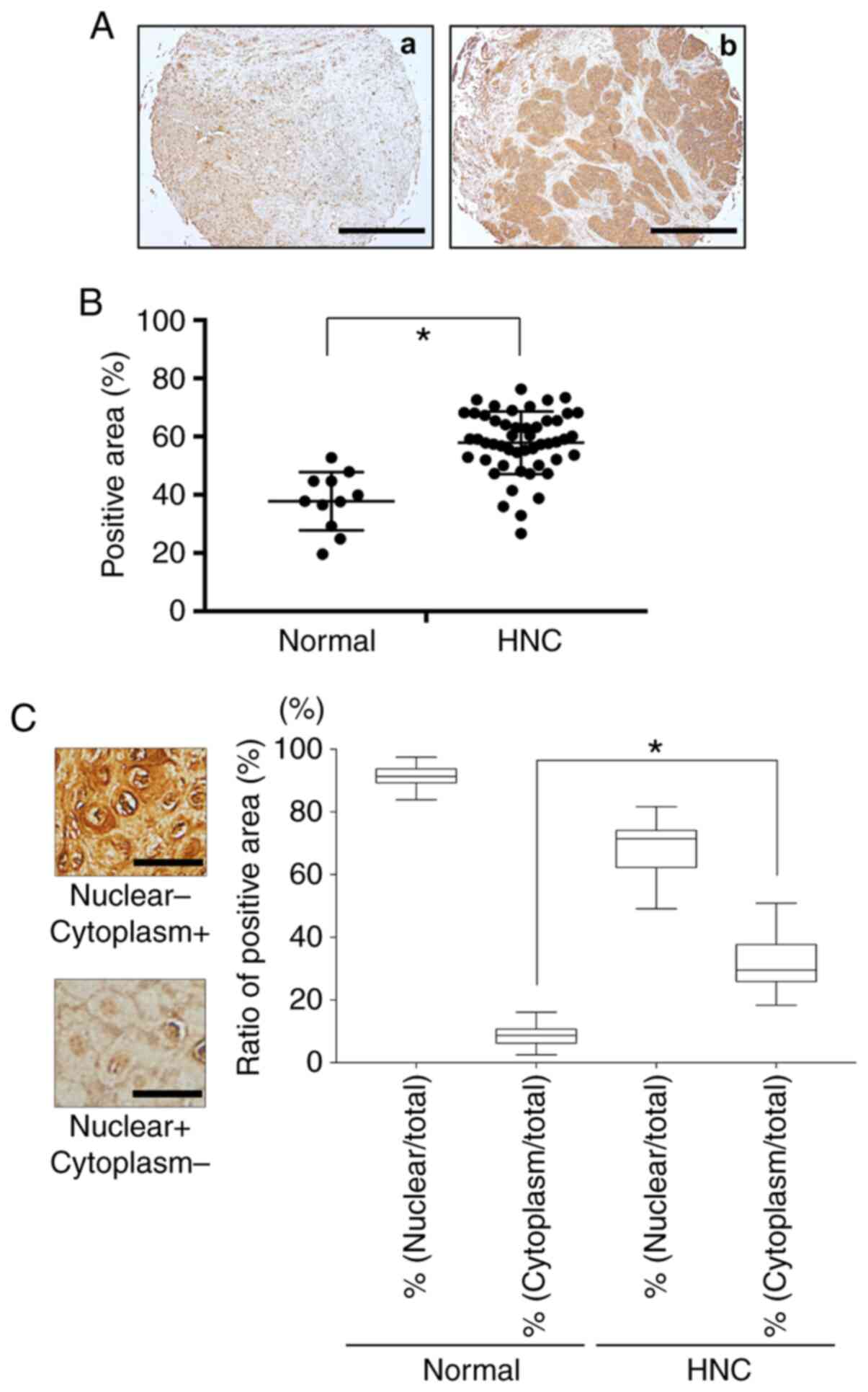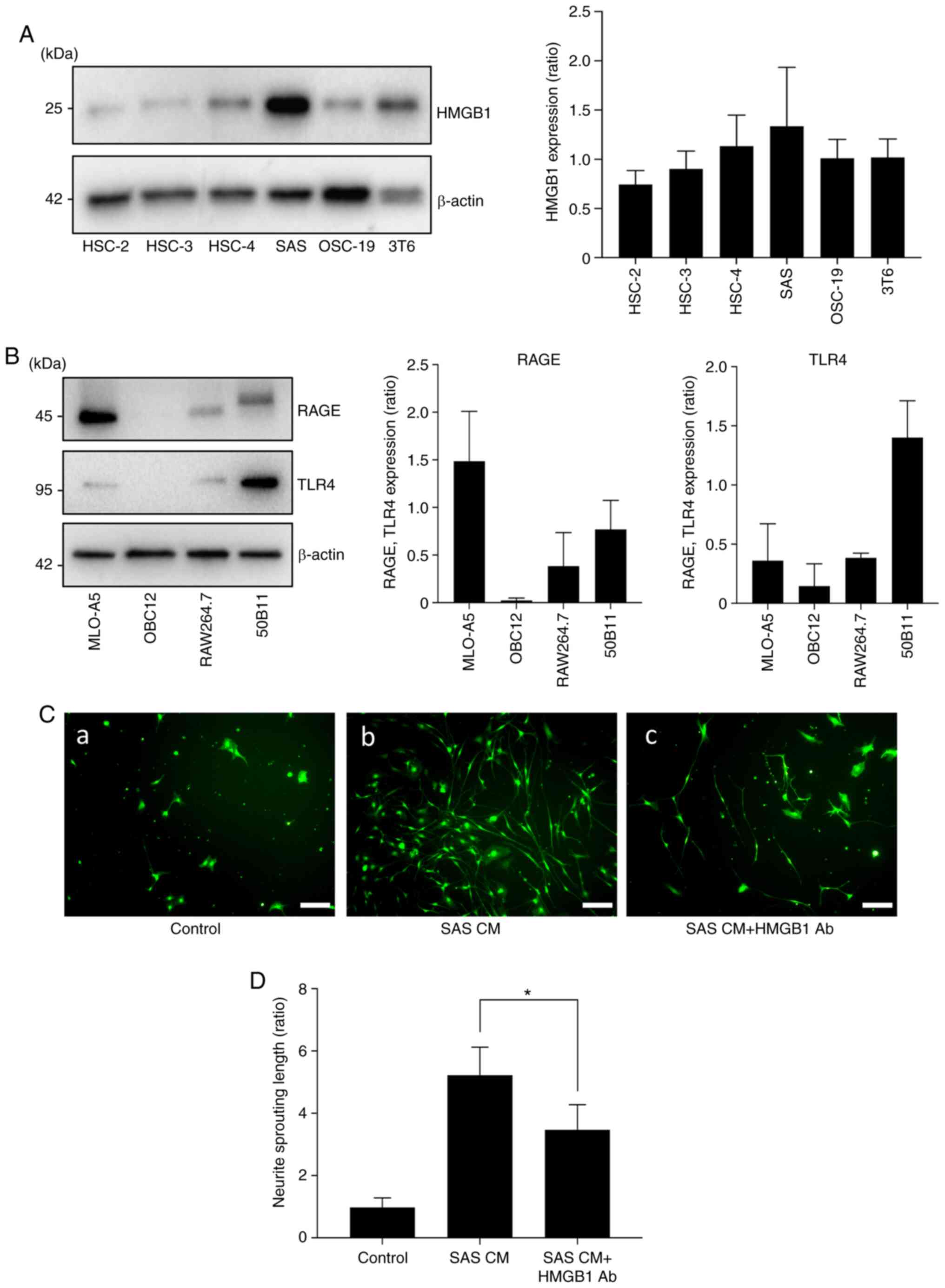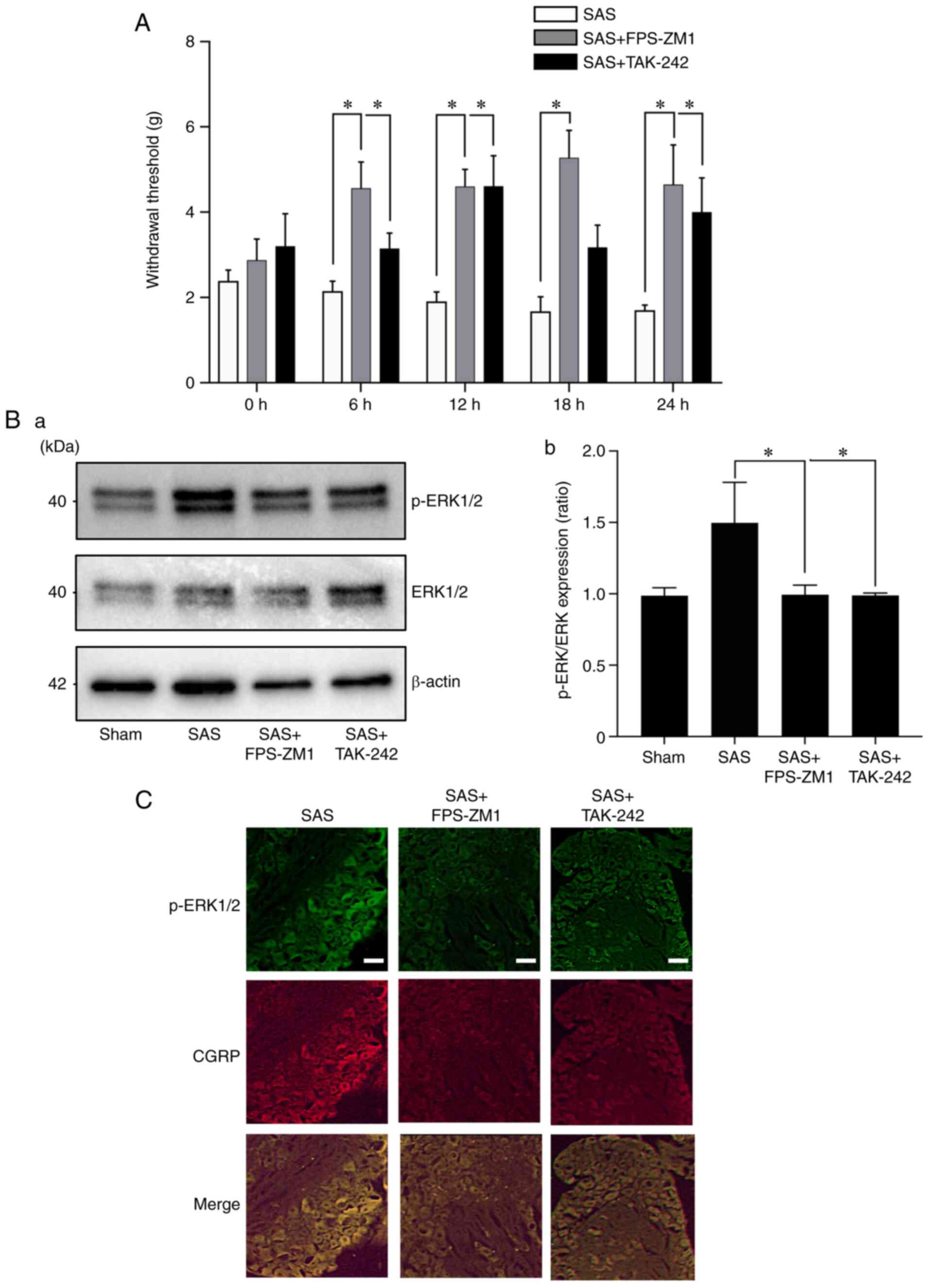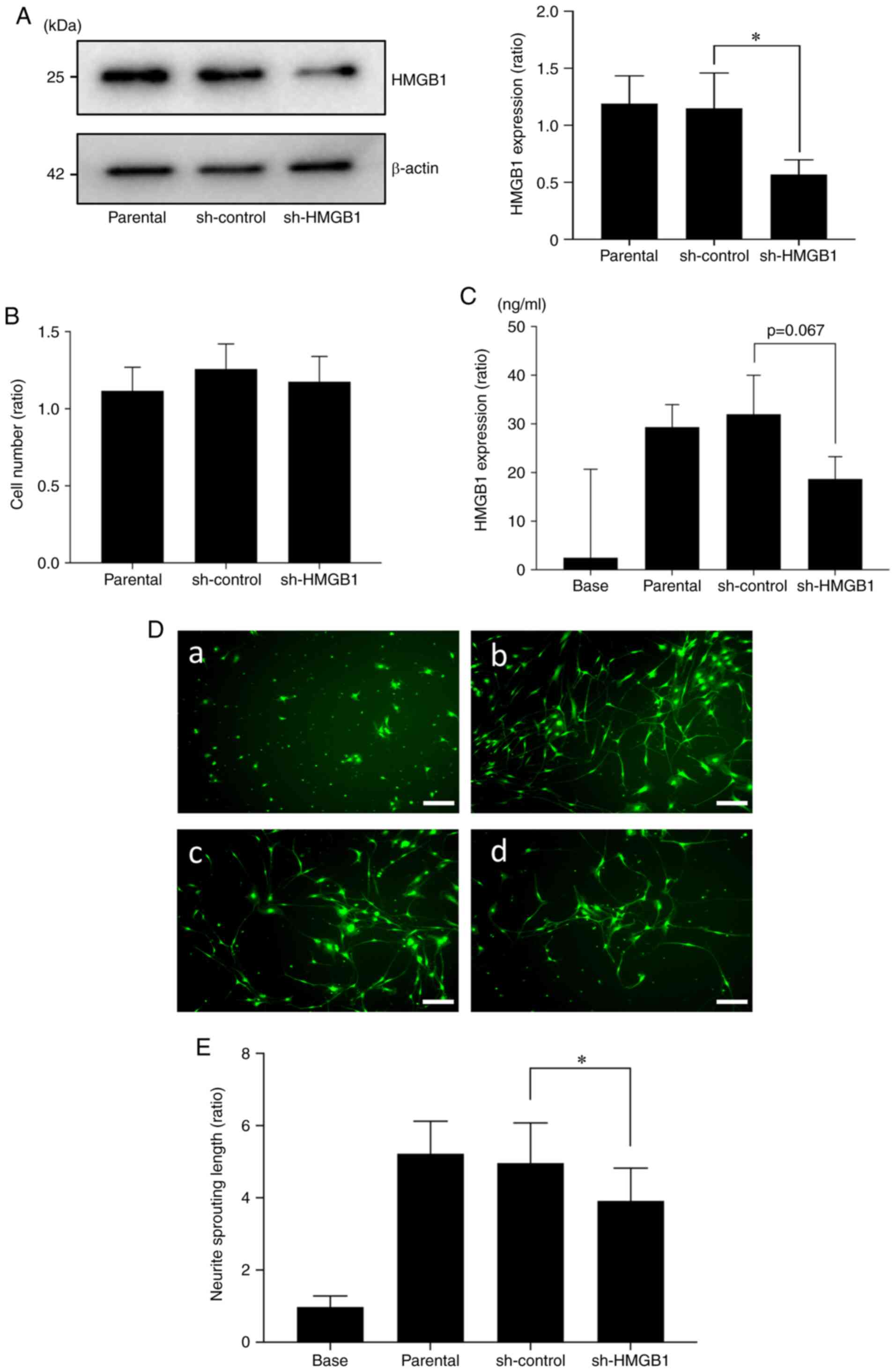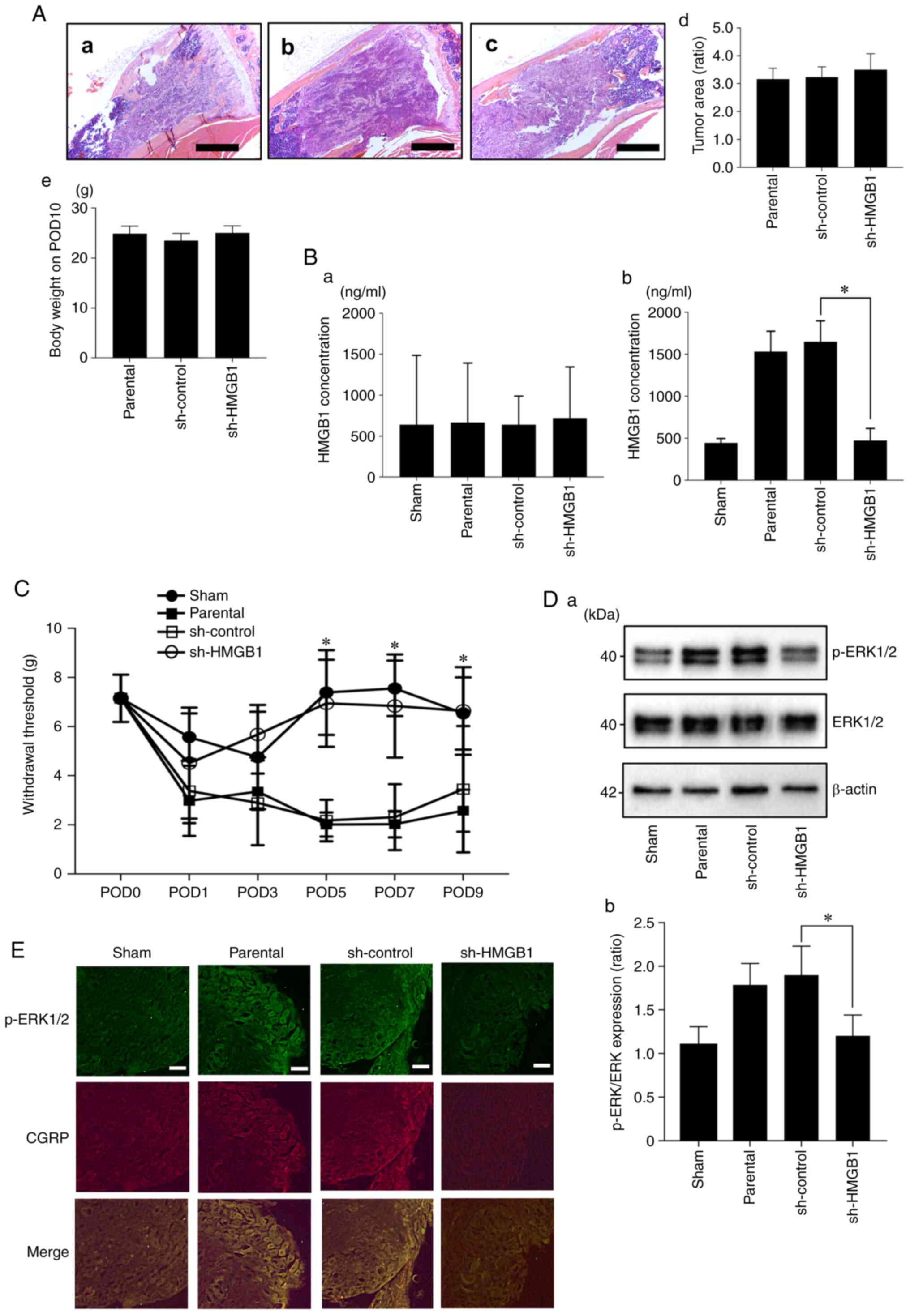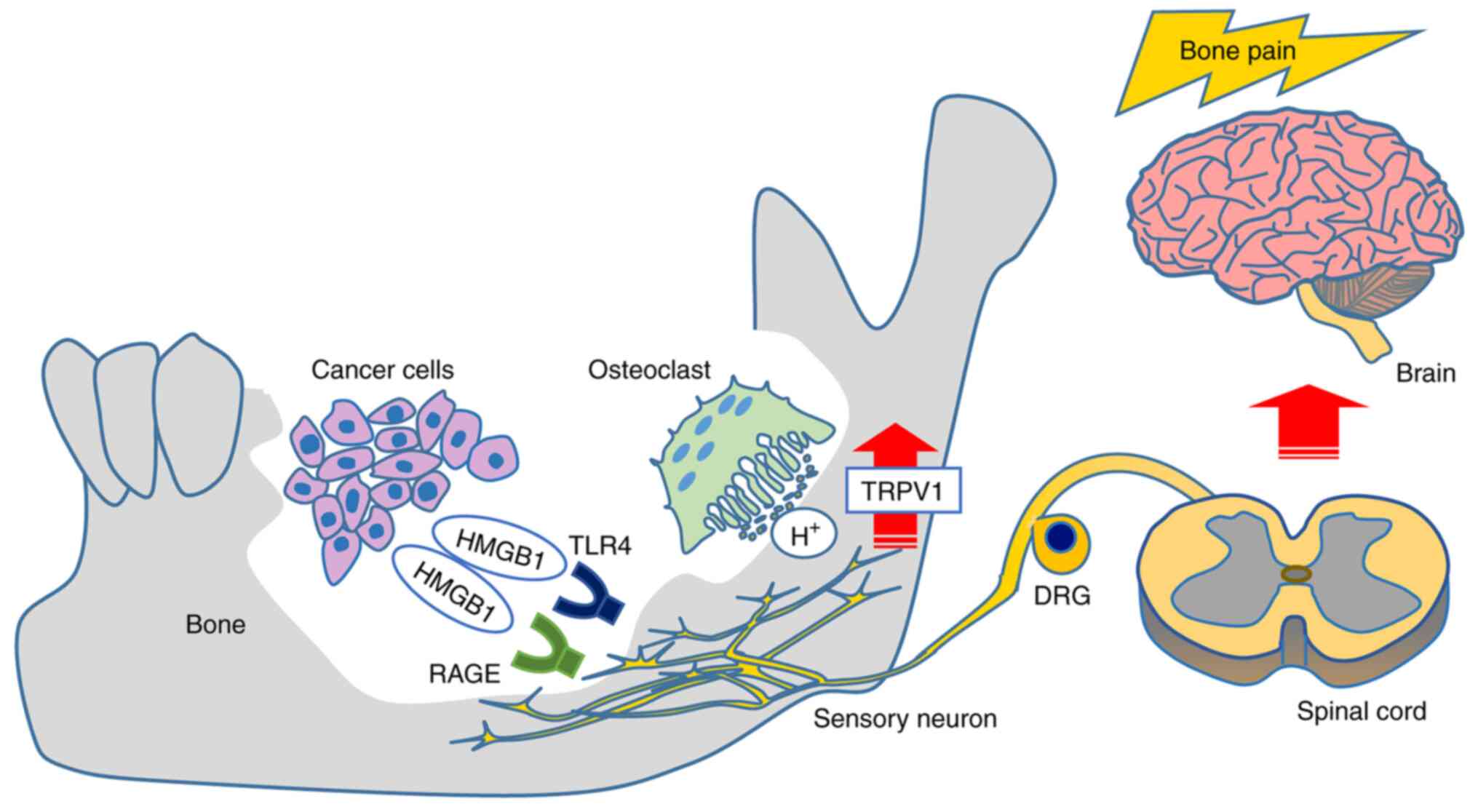|
1
|
Zheng Y, Zhou H, Dunstan CR, Sutherland RL
and Seibel MJ: The role of the bone microenvironment in skeletal
metastasis. J Bone Oncol. 2:47–57. 2012. View Article : Google Scholar : PubMed/NCBI
|
|
2
|
Schmidt BL: The neurobiology of cancer
pain. J Oral Maxillofac Surg. 73 (Suppl 12):S132–S135. 2015.
View Article : Google Scholar : PubMed/NCBI
|
|
3
|
Montazeri A: Quality of life data as
prognostic indicators of survival in cancer patients: An overview
of the literature from 1982 to 2008. Health Qual Life Outcomes.
7:1022009. View Article : Google Scholar : PubMed/NCBI
|
|
4
|
Viet CT and Schmidt BL: Biologic
mechanisms of oral cancer pain and implications for clinical
therapy. J Dent Res. 91:447–453. 2012. View Article : Google Scholar : PubMed/NCBI
|
|
5
|
Garg AD and Agostinis P: Cell death and
immunity in cancer: From danger signals to mimicry of pathogen
defense responses. Immunol Rev. 280:126–148. 2017. View Article : Google Scholar : PubMed/NCBI
|
|
6
|
Carballo M, Puigdomenech P and Palau J:
DNA and histone H1 interact with different domains of HMG 1 and 2
proteins. EMBO J. 2:1759–1764. 1983. View Article : Google Scholar : PubMed/NCBI
|
|
7
|
Man LL, Liu F and Wang YJ, Song HH, Xu HB,
Zhu ZW, Zhang Q and Wang YJ: The HMGB1 signaling pathway activates
the inflammatory response in Schwann cells. Neural Regen Res.
10:1706–1712. 2015. View Article : Google Scholar : PubMed/NCBI
|
|
8
|
Das N, Dewan V, Grace PM, Gunn RJ, Tamura
R, Tzarum N, Watkins LR, Wilson IA and Yin H: HMGB1 activates
proinflammatory signaling via TLR5 leading to allodynia. Cell Rep.
17:1128–1140. 2016. View Article : Google Scholar : PubMed/NCBI
|
|
9
|
Sims GP, Rowe DC, Rietdijk ST, Herbst R
and Coyle AJ: HMGB1 and RAGE in inflammation and cancer. Annu Rev
Immunol. 28:367–388. 2010. View Article : Google Scholar : PubMed/NCBI
|
|
10
|
Shao Y, Sha M, Chen L, Li D, Lu J and Xia
S: HMGB1/TLR4 signaling induces an inflammatory response following
high-pressure renal pelvic perfusion in a porcine model. Am J
Physiol Renal Physiol. 311:F915–F925. 2016. View Article : Google Scholar : PubMed/NCBI
|
|
11
|
Wang Y, Jiang Z, Yan J and Ying S: HMGB1
as a potential biomarker and therapeutic target for malignant
mesothelioma. Dis Markers. 2019:41831572019.PubMed/NCBI
|
|
12
|
Sun S, Zhang W, Cui Z, Chen Q, Xie P, Zhou
C, Liu B, Peng X and Zhang Y: High mobility group box-1 and its
clinical value in breast cancer. Onco Targets Ther. 8:413–419.
2015.PubMed/NCBI
|
|
13
|
Yi B, Williams PJ, Niewolna M, Wang Y and
Yoneda T: Tumor-derived platelet-derived growth factor-BB plays a
critical role in osteosclerotic bone metastasis in an animal model
of human breast cancer. Cancer Res. 62:917–923. 2002.PubMed/NCBI
|
|
14
|
Guise TA, Yin JJ, Taylor SD, Kumagai Y,
Dallas M, Boyce BF, Yoneda T and Mundy GR: Evidence for a causal
role of parathyroid hormone-related protein in the pathogenesis of
human breast cancer-mediated osteolysis. J Clin Invest.
98:1544–1549. 1996. View Article : Google Scholar : PubMed/NCBI
|
|
15
|
Hiasa M, Okui T, Allette YM, Ripsch MS,
Sun-Wada GH, Wakabayashi H, Roodman GD, White FA and Yoneda T: Bone
pain induced by multiple myeloma is reduced by targeting V-ATPase
and ASIC3. Cancer Res. 77:1283–1295. 2017. View Article : Google Scholar : PubMed/NCBI
|
|
16
|
Yoneda T, Hiasa M, Nagata Y, Okui T and
White F: Contribution of acidic extracellular microenvironment of
cancer-colonized bone to bone pain. Biochim Biophys Acta.
1848:2677–2684. 2015. View Article : Google Scholar : PubMed/NCBI
|
|
17
|
Wakabayashi H, Wakisaka S, Hiraga T, Hata
K, Nishimura R, Tominaga M and Yoneda T: Decreased sensory nerve
excitation and bone pain associated with mouse Lewis lung cancer in
TRPV1-deficient mice. J Bone Miner Metab. 36:274–285. 2018.
View Article : Google Scholar : PubMed/NCBI
|
|
18
|
Ryumon S, Okui T, Kunisada Y, Kishimoto K,
Shimo T, Hasegawa K, Ibaragi S, Akiyama K, Thu Ha NT, Monsur Hassan
NM and Sasaki A: Ammonium tetrathiomolybdate enhances the antitumor
effect of cisplatin via the suppression of ATPase copper
transporting beta in head and neck squamous cell carcinoma. Oncol
Rep. 42:2611–2621. 2019.PubMed/NCBI
|
|
19
|
Ueno H, Matsuda T, Hashimoto S, Amaya F,
Kitamura Y, Tanaka M, Kobayashi A, Maruyama I, Yamada S, Hasegawa
N, et al: Contributions of high mobility group box protein in
experimental and clinical acute lung injury. Am J Respir Crit Care
Med. 170:1310–1316. 2004. View Article : Google Scholar : PubMed/NCBI
|
|
20
|
Wu C, Ding X, Zhou C, Ye P, Sun Y, Wu J,
Zhang A, Huang X, Ren L, Wang K, et al: Inhibition of intimal
hyperplasia in murine aortic allografts by administration of a
small-molecule TLR4 inhibitor TAK-242. Sci Rep. 7:157992017.
View Article : Google Scholar : PubMed/NCBI
|
|
21
|
Yang F, Wang Z, Zhang JH, Tang J, Liu X,
Tan L, Huang QY and Feng H: Receptor for advanced glycation
end-product antagonist reduces blood-brain barrier damage after
intracerebral hemorrhage. Stroke. 46:1328–1336. 2015. View Article : Google Scholar : PubMed/NCBI
|
|
22
|
Hu XM, Yang W, Du LX, Cui WQ, Mi WL,
Mao-Ying QL, Chu YX and Wang YQ: Vascular endothelial growth factor
a signaling promotes spinal central sensitization and pain-related
behaviors in female rats with bone cancer. Anesthesiology.
131:1125–1147. 2019. View Article : Google Scholar : PubMed/NCBI
|
|
23
|
Javaherian K, Liu JF and Wang JC:
Nonhistone proteins HMG1 and HMG2 change the DNA helical structure.
Science. 199:1345–1346. 1978. View Article : Google Scholar : PubMed/NCBI
|
|
24
|
Antoine DJ, Jenkins RE, Dear JW, Williams
DP, McGill MR, Sharpe MR, Craig DG, Simpson KJ, Jaeschke H and Park
BK: Molecular forms of HMGB1 and keratin-18 as mechanistic
biomarkers for mode of cell death and prognosis during clinical
acetaminophen hepatotoxicity. J Hepatol. 56:1070–1079. 2012.
View Article : Google Scholar : PubMed/NCBI
|
|
25
|
Dumitriu IE, Baruah P, Valentinis B, Voll
RE, Herrmann M, Nawroth PP, Arnold B, Bianchi ME, Manfredi AA and
Rovere-Querini P: Release of high mobility group box 1 by dendritic
cells controls T cell activation via the receptor for advanced
glycation end products. J Immunol. 174:7506–7515. 2005. View Article : Google Scholar : PubMed/NCBI
|
|
26
|
Lotze MT and Tracey KJ: High-mobility
group box 1 protein (HMGB1): Nuclear weapon in the immune arsenal.
Nat Rev Immunol. 5:331–342. 2005. View
Article : Google Scholar : PubMed/NCBI
|
|
27
|
Jiang W, Li J, Gallowitsch-Puerta M,
Tracey KJ and Pisetsky DS: The effects of CpG DNA on HMGB1 release
by murine macrophage cell lines. J Leukoc Biol. 78:930–936. 2005.
View Article : Google Scholar : PubMed/NCBI
|
|
28
|
Fang J, Ge X, Xu W, Xie J, Qin Z, Shi L,
Yin W, Bian M and Wang H: Bioinformatics analysis of the prognosis
and biological significance of HMGB1, HMGB2, and HMGB3 in gastric
cancer. J Cell Physiol. 235:3438–3446. 2020. View Article : Google Scholar : PubMed/NCBI
|
|
29
|
Wu T, Zhang W, Yang G, Li H, Chen Q, Song
R and Zhao L: HMGB1 overexpression as a prognostic factor for
survival in cancer: A meta-analysis and systematic review.
Oncotarget. 7:50417–50427. 2016. View Article : Google Scholar : PubMed/NCBI
|
|
30
|
Saleh A, Smith DR, Tessler L, Mateo AR,
Martens C, Schartner E, Van der Ploeg R, Toth C, Zochodne DW and
Fernyhough P: Receptor for advanced glycation end-products (RAGE)
activates divergent signaling pathways to augment neurite outgrowth
of adult sensory neurons. Exp Neurol. 249:149–159. 2013. View Article : Google Scholar : PubMed/NCBI
|
|
31
|
Allette YM, Due MR, Wilson SM, Feldman P,
Ripsch MS, Khanna R and White FA: Identification of a functional
interaction of HMGB1 with receptor for advanced glycation
end-products in a model of neuropathic pain. Brain Behav Immun.
42:169–177. 2014. View Article : Google Scholar : PubMed/NCBI
|
|
32
|
Teitelbaum SL: Bone resorption by
osteoclasts. Science. 289:1504–1508. 2000. View Article : Google Scholar : PubMed/NCBI
|
|
33
|
Caterina MJ, Schumacher MA, Tominaga M,
Rosen TA, Levine JD and Julius D: The capsaicin receptor: A
heat-activated ion channel in the pain pathway. Nature.
389:816–824. 1997. View
Article : Google Scholar : PubMed/NCBI
|
|
34
|
Wu H, Xu G and Li YP: Atp6v0d2 is an
essential component of the osteoclast-specific proton pump that
mediates extracellular acidification in bone resorption. J Bone
Miner Res. 24:871–885. 2009. View Article : Google Scholar : PubMed/NCBI
|
|
35
|
Hasegawa K, Okui T, Shimo T, Ibaragi S,
Kawai H, Ryumon S, Kishimoto K, Okusha Y, Monsur Hassan NM and
Sasaki A: Lactate transporter monocarboxylate transporter 4 induces
bone pain in head and neck squamous cell carcinoma. Int J Mol Sci.
19:33172018. View Article : Google Scholar
|
|
36
|
Janko C, Filipovic M, Munoz LE, Schorn C,
Schett G, Ivanovic-Burmazovic I and Herrmann M: Redox modulation of
HMGB1-related signaling. Antioxid Redox Signal. 20:1075–1085. 2014.
View Article : Google Scholar : PubMed/NCBI
|
|
37
|
Yamasoba D, Tsubota M, Domoto R, Sekiguchi
F, Nishikawa H, Liu K, Nishibori M, Ishikura H, Yamamoto T, Taga A
and Kawabata A: Peripheral HMGB1-induced hyperalgesia in mice:
Redox state-dependent distinct roles of RAGE and TLR4. J Pharmacol
Sci. 130:139–142. 2016. View Article : Google Scholar : PubMed/NCBI
|
|
38
|
Balosso S, Liu J, Bianchi ME and Vezzani
A: Disulfide-containing high mobility group box-1 promotes
N-methyl-D-aspartate receptor function and excitotoxicity by
activating Toll-like receptor 4-dependent signaling in hippocampal
neurons. Antioxid Redox Signal. 21:1726–1740. 2014. View Article : Google Scholar : PubMed/NCBI
|
|
39
|
VanPatten S and Al-Abed Y: High mobility
group Box-1 (HMGb1): Current wisdom and advancement as a potential
drug target. J Med Chem. 61:5093–5107. 2018. View Article : Google Scholar : PubMed/NCBI
|















